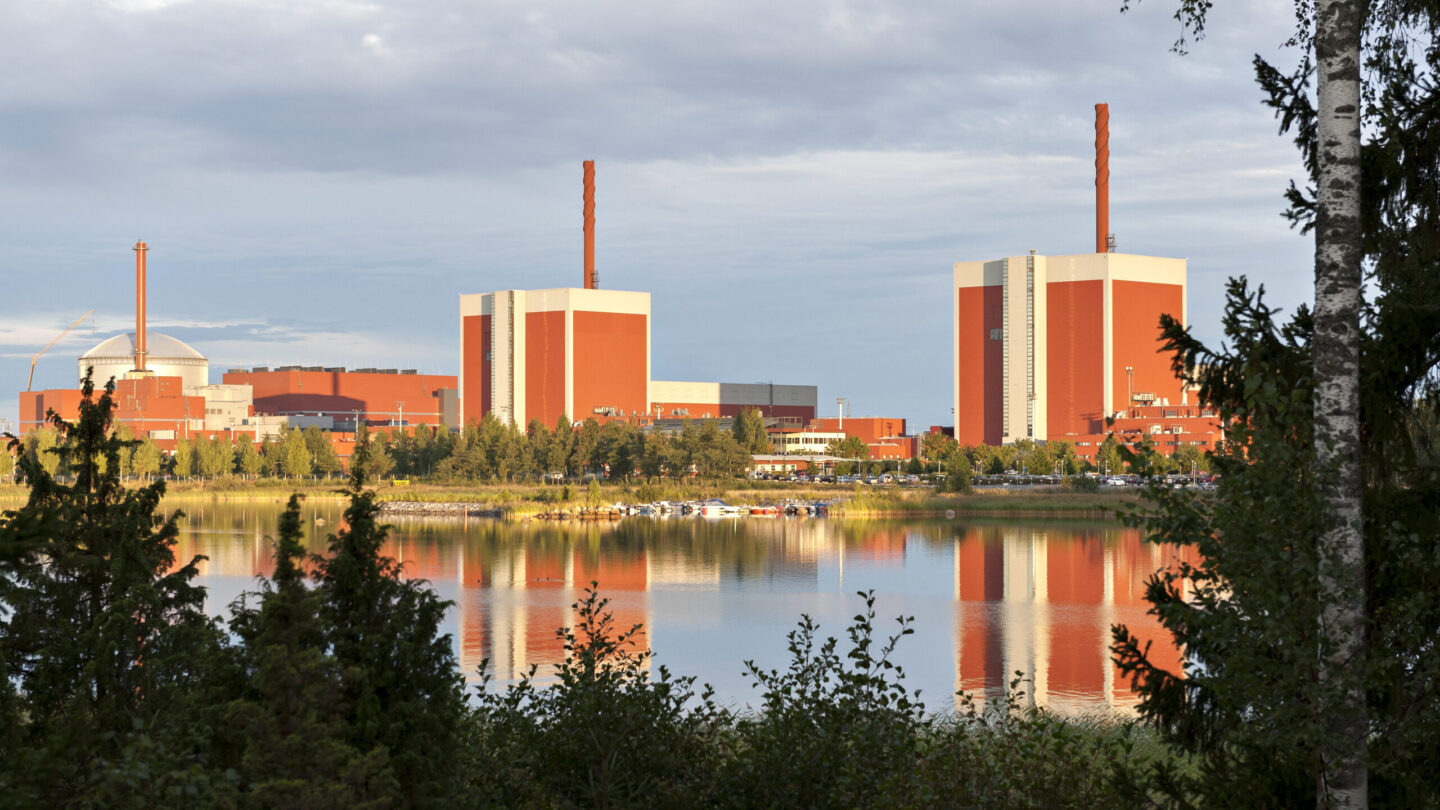Electricity production at Olkiluoto 3 has begun
2022 was an eventful year for EPV Power, especially in terms of nuclear power. Olkiluoto 1 (OL1) and 2 (OL2) operated without major disruptions and had an extremely good production year. OL2 even reached its all-time production record of 7.5 terawatt-hours (TWh).
In March, a major milestone was reached when Olkiluoto 3 (OL3) started pre-operational testing. In April, the pre-operational tests had to be interrupted due to maintenance and repair work on the generator cooling system and turbine parts. The pre-operational testing phase resumed in August, and capacity was gradually increased until the plant reached 1,600 megawatts (MW) in September.
“Despite the pre-operational testing phase, OL3 produced 1.9 TWh of electricity over the year,” says Niko Paaso, Vice President of EPV Power business area.
In October, cracks were identified in the impellers of the feedwater pumps located in OL3’s turbine island, and production was suspended while an investigation was carried out. The investigation revealed that the cracks in the impellers are likely to have occurred during the pre-operational testing phase, which involves running the pumps under abnormal conditions, resulting in them being subjected to higher than normal loads. The pre-operational tests were resumed at the end of December.
“Power generation will resume after maintenance of the failed valve, further inspection of other safety valves and new tests in March, after which the pre-operational testing phase will continue for another month or so before regular power generation begins.”
Five final disposal tunnels completed
Preparations for the final disposal of spent nuclear fuel progressed during the year in Olkiluoto. The final disposal will be carried out by Posiva, which is partly owned by Teollisuuden Voima.
“The structural engineering work on the encapsulation plant was completed in May and the excavation of the first five final disposal tunnels in June,” says Paaso.
Work has continued with equipment and system installations, which are already well under way. The final disposal of nuclear fuel is scheduled to start in the mid-2020s. This would make Posiva and, by extension, its owner TVO the first company in the world to start the final disposal of radioactive waste.
EUR 26 million of aid for a pumped-storage hydropower project
In 2021, EPV’s project for a pumped-storage hydropower (PSH) plant in Pyhäsalmi received a grant of EUR 26.3 million from the Ministry of Economic Affairs and Employment of Finland. In December 2022, the aid was approved by the European Commission. During the year, work continued on the preparation and planning of the project, including technical design and the submission of permit applications.
The PSH plant will be built at the Pyhäsalmi Mine, where the mining company carried out closure measures during the rest of the year following the end of ore production in August.
“At a depth of 1.4 kilometres, the mine is unique in Finland and provides an excellent site for the construction of a pumped-storage hydro plant. With such a great drop height, more power can be produced with less water, allowing for smaller waterways, water reserves and turbine equipment,” Paaso explains.
The pumped-storage hydro plant will increase the flexibility of Finland’s electricity system, which is becoming increasingly important as the demand for wind and solar power grows. In 2022, increasing storage and flexibility became an essential part of EPV’s New Electricity Revolution® Strategy.
“During periods of low wind and cloudy weather, water will be discharged from the upper reservoir into the lower reservoir at the bottom of the mine. When weather conditions are favourable again, the water will be pumped back up for when it is next needed.”
A good year for hydroelectric power
EPV’s hydropower plants worked as planned without significant disruption in 2022. The production volume of the average hydrological year was exceeded and, especially in Sweden, Voimapiha produced a large amount of clean hydroelectric power.
Electricity prices fluctuated wildly, and the importance of the regulation capabilities of hydropower in managing the electricity system and increasing flexibility became even more important. For example, when there was little wind and prices rose, hydropower was used more.
The launch of the electric battery in Teuva is approaching
In the first quarter, it was decided to implement the planned electric battery storage investment for the Paskoonharju wind farm in Teuva. Earthworks and equipment installation were completed at the end of the year. The battery will have a capacity of 12 MW and its commercial deployment is planned for spring 2023, according to Paaso.
The battery investment is an excellent support for EPV’s strategy to increase storage and flexibility in the electricity system. The battery will provide much-needed fast balancing power and act as a risk-management tool. For example, in the event of a disturbance, the battery will ensure the balance of the power system.
Preparations for the hydrogen project continued
EPV is involved in the H-FLEX-E hydrogen project together with Wärtsilä and Vaasan Sähkö. The aim is to store emission-free electricity in the form of hydrogen, and later to convert it back into electricity in a hydrogen-fuelled power plant, which we plan to build at the Vaskiluoto power plant site. Hydrogen can help replace fossil fuels in energy production.
In 2021, the project received a grant of EUR 14 million from the Ministry of Economic Affairs and Employment of Finland. Preparatory and planning work progressed in 2022, when the technical design of the plant was further developed and the necessary permit applications were prepared.
According to Paaso, the hydrogen project, like the Teuva electric battery investment, will support EPV’s goal of increasing the zero-emission flexibility needed in the electricity system. These projects have been driven by EPV Power’s two technology teams – Electricity Storage and Hydrogen – whose mission is to identify and delve deeper into promising technologies and their potential for utilisation.
“The hydrogen project offers an excellent solution for longer-term storage of electricity generated, for example, during windy periods. The idea is to produce hydrogen when there is plenty of wind and solar power available and to focus on producing electricity from hydrogen when there is not enough wind or solar power.”
Total power procurement in Finland 2022 (86 196 GWh)
EPV’s power procurement 2022 (4 034,8 GWh)
Illustration of the Pyhäsalmi pumped-storage hydro plant


